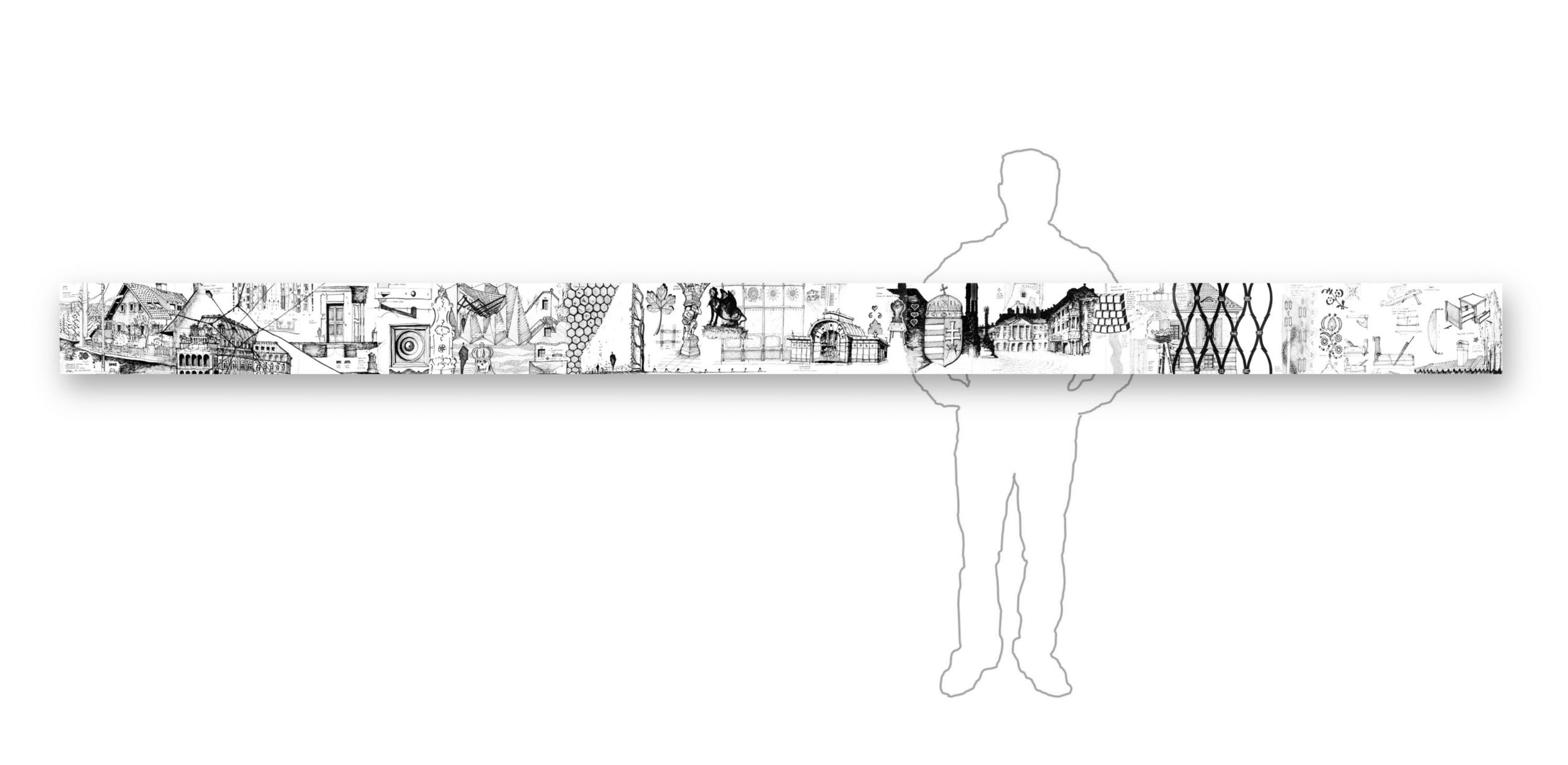6.24.Hungary-3-detail-f Highlights Relevant to Sustainable Design:
We can look into reducing energy with natural light and ventilation from window transoms.
The window sketch shows an upper rectangle with three panes of glass and a lower pair of panes with three small glass inserts in each. The upper portion opens up and out to allow for natural ventilation. Plus it prevents the rain from coming in if you need a breeze on a hot summer day when it starts to rain. Each of the two lower portions also opens out as casement windows versus the more common double-hung windows in America. With high-efficiency air-conditioning, the use of natural ventilation is less of a concern now than it was in America before WW II. A significant portion of the world does not have central air-conditioning, so they have had to innovate to maximize natural onsite conditions such as breeze. In 2007, only 2 percent of households in India and 11 percent of households in Brazil had air-conditioning, compared with 87 percent of households in the United States.[i] For other ventilation, like removing smoke, the chimney vents in the upper corner help the wind draft the smoke.
For our solar home outside of Philadelphia, I made the case to my wife that we could use casement windows to take advantage of the natural breezes and still maintain a stylistic look that matched the context of our more traditional “double-hung” neighborhood. The results are that we have significant more natural ventilation, use the air-conditioning in the spring, summer, and fall much less than our neighbors, and save on energy and home operating costs. Plus, new reports on “sick building syndrome” indicate that there are more toxins than we might have imagined in the carpet, furniture glue, and so on. This makes natural ventilation an asset for health rather than just for energy savings.
Author and illustrator: Charlie Szoradi is an architect, inventor, and the CEO of Independence LED Lighting. He writes about many other topics related to air-conditioning reduction with natural ventilation through his extensive travels around the world.
If you have found this posting online, it is an excerpt from Mr. Szoradi’s book Learn from Looking that served as the inspiring seed content for this drawing share resource. For additional drawings and insights on natural ventilation and reduction of sick building syndrome, we hope that you enjoy exploring LearnfromLooking.com. You can search via general terms such as sustainability as well as narrower terms such as natural ventilation, casement windows, and double-hung windows.
[i] Air-Conditioning:
Hungary 3: Detail (f)—New York Times article on “The Cost of Cool”: http://www.nytimes.com/2012/08/19/sunday-review/air-conditioning-is-an-environmental-quandary.html?_r=0.



